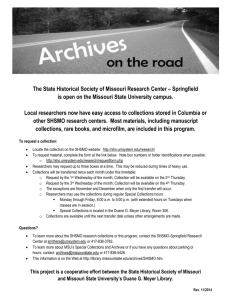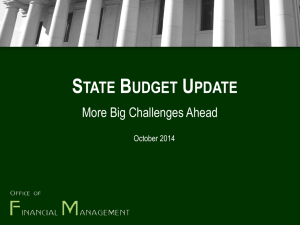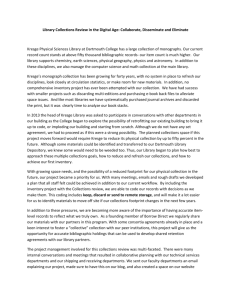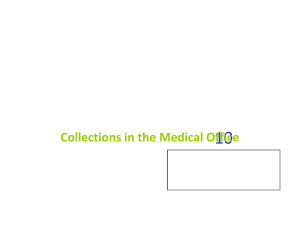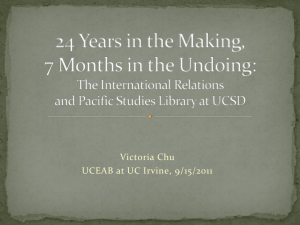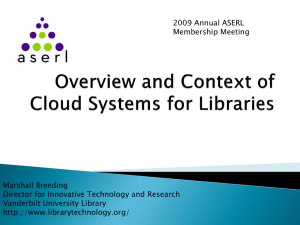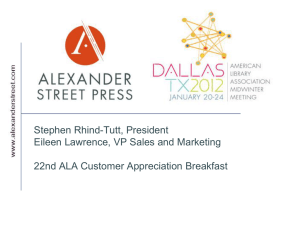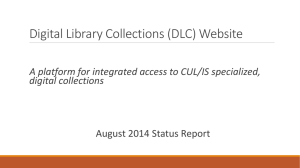Food waste collections
advertisement
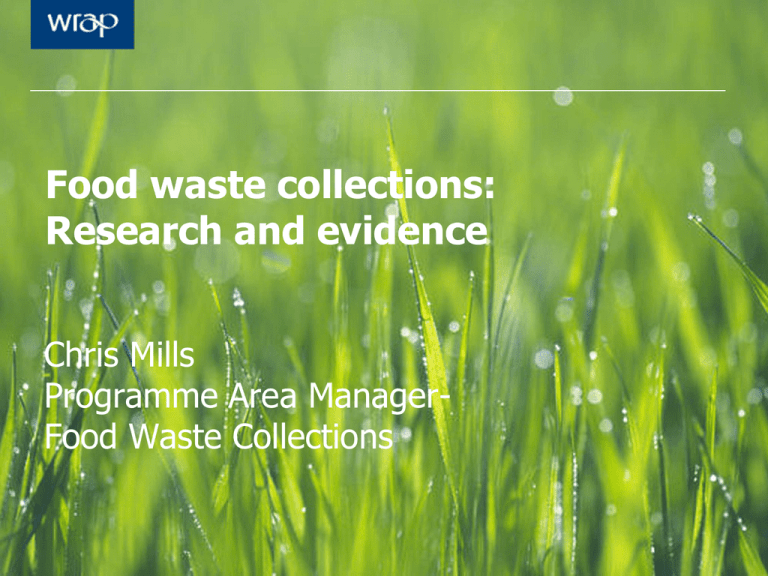
Food waste collections: Research and evidence Chris Mills Programme Area ManagerFood Waste Collections Total estimated UK arisings of food (and drink) waste is ~15 million tonnes per year 7.2mt 3.2mt 0.6mt 0.4mt 0.1mt 3.0mt household food manufacturing (industrial) hospitality retail/distribution schools other: commercial/agriculture/hospitals Trends • Significant rise in food services to households • Recent growth in separate collections • Drivers of LF Tax, targets, service improvement • Contribution to National Targets • Room for further capture Kitchen caddies – all scheme types Combined garden/food waste Kerbside buckets for separate food collection Food only – dedicated Co-collection Emissions from in vessel composting 1 tonne of food waste 100 0 kg CO2eq emitted -100 Collection (15 miles) Transfer to IVC site (15 miles) IVC emissions (diesel & electric) IVC composting avoided emissions emissions from landfill -200 -300 -400 -500 -600 Life Cycle Stage Net emissions Correlation between participation and deprivation Yield: kg per household per week 2.5 2 1.5 1 0.5 0 0 10 20 30 40 Index of Multiple Deprivation 50 60 70 Weekly food – different refuse frequencies Fortnightly refuse Weekly refuse Average food waste yield: kg/ household served / week 1.9 1.8 1.7 1.6 1.5 1.4 1.3 1.2 1.1 1 1 2 3 4 5 6 7 8 9 10 11 12 13 14 15 16 17 18 19 Number of weeks from trial roll-out 20 21 22 23 24 25 26 27 28 29 Combined garden and food systems • Typically lower capture – frequency and mixing with garden issues • Frequent waste composition is essential • Seasonality • Refuse Collection Vehicle and wheeled bin collection • IVC destination • High additional treatment cost WRAP cost and operational performance benchmarks • Indicative cost and performance data by rurality grouping • Industry capex/opex benchmarks • Gross costs of options • Net costs • Round sizes • Pick rates Non-participation in food waste collections • Importance of frequency • Single biggest factor is always - “we don’t produce enough food waste” • Concerns about hygiene, odour or vermin raised by non-participants – not participants • No concern over container numbers Hospitality & Food Service Agreement • Prevention target: Reduce food and associated packaging waste arising by 5% by the end of 2015. This would be against a 2012 baseline and be measured by CO2e emissions • Waste management target: Increase the overall rate of food and packaging waste being recycled, sent to Anaerobic Digestion or composted to at least 70% by the end of 2015. • Business benefits (25% of sector achieve targets) = £76m net savings to business and 570,000 tonnes CO2e saving But few current SME collections… SMEs unwilling to pay extra Recruitment can be difficult; price, convenience, space, contract terms Very low take up by telesales/ direct mail; need pre-arranged visits Refuse charges made by lift not weight Recent Work on Business Food Collections • Published business case • Funded commercial collection demonstration projects • Development of new web tools and guidance • New cost calculator for businesses to identify cost and performance of options Business benefits • Significant savings upstream • Using yield data from collections to inform stock control • Savings for larger businesses • Collaborative procurement opportunities • New WRAP report on “True Cost of Food Waste” for businesses Depackaging Feedstock supply Macerators • Ban in Scotland from 2016 • Defra CBA for HH collections- on environmental and financial grounds collection favoured • WRAP CBA on NHS food options • ZWS – monitoring on NHS sites • Concerns raised over sewer impact and measuring diversion Web support WRAP websites across the UK Supporting households, Authorities and businesses on food waste management • Love Food Hate Waste • Resource Efficient Scotland • Business Resource Efficiency Hub • SME Food Collections • Local Authority Advisory support 27 Current Collections Work 2013-14 1. Collections from public sector and food manufacturers 2. Further research on liners and de-packaging 3. Disseminating work on commercial collections 4. Developing business support tools 5. Interventions to improving performance of household food waste collections Considerations in previous landfill bans or regions setting high targets Business case and cost of options Reviewing current performance Communications for scheme changes De-packaging infrastructure for commercial collections • Treatment contract implications • Business facing support • Monitoring and enforcement • • • • Further Information: www.wrap.org.uk WRAP Northern Ireland The Mount 2 Woodstock Link Belfast BT6 8DD Tel: 028 9073 7290



